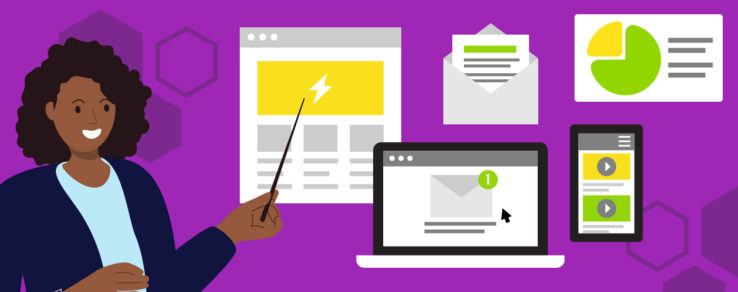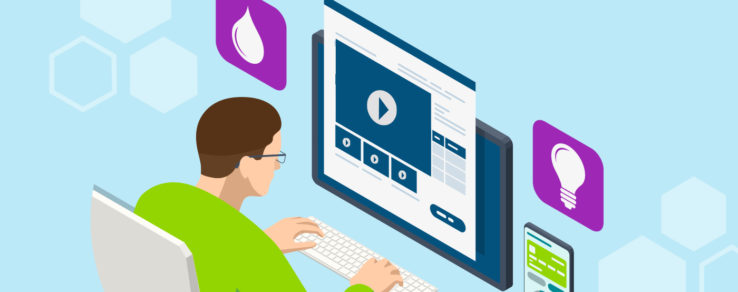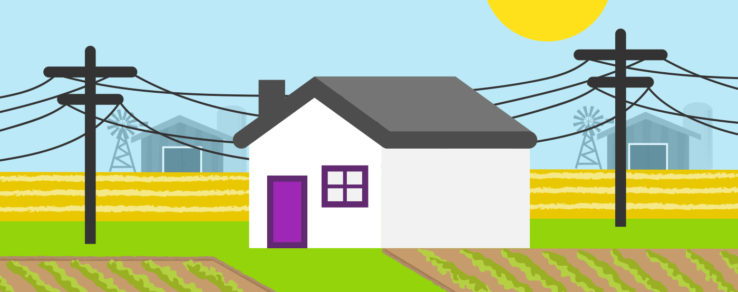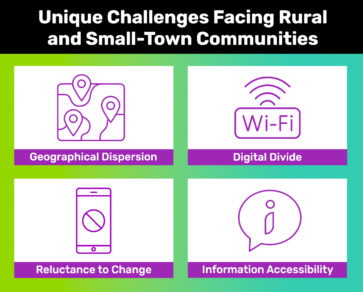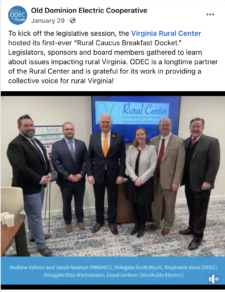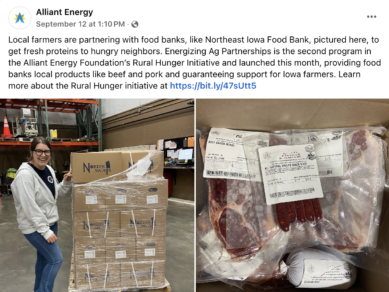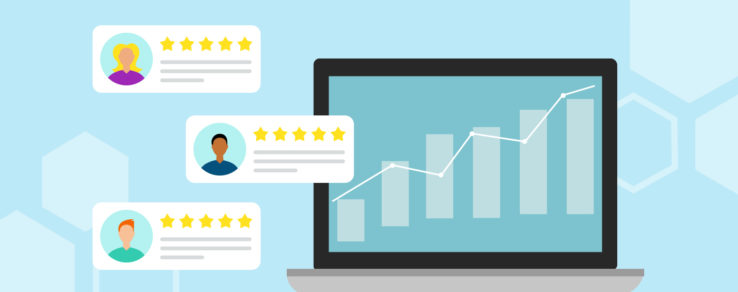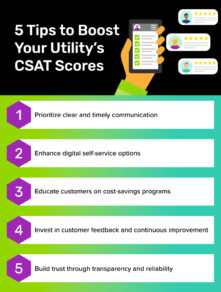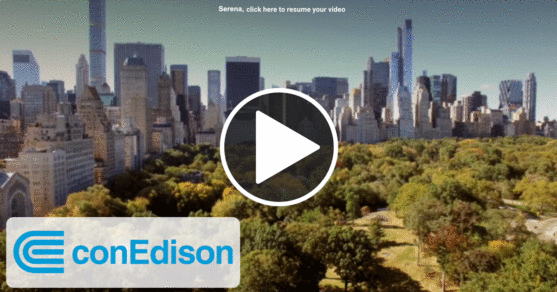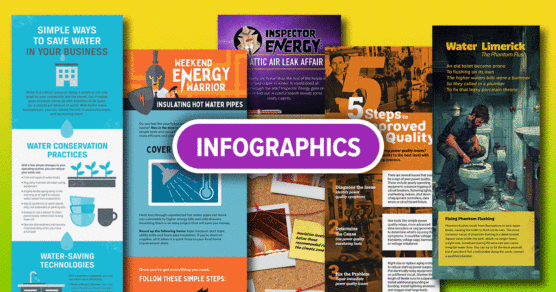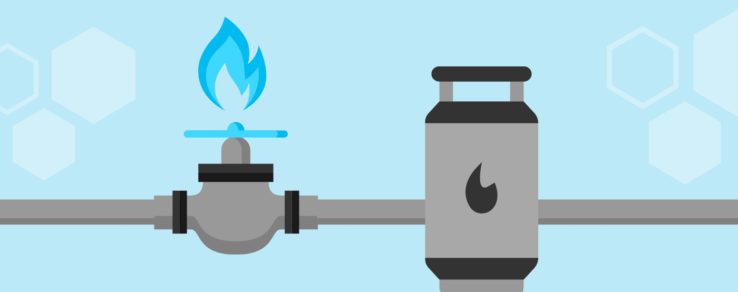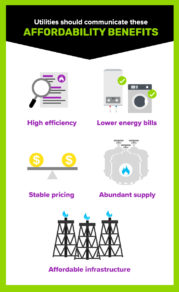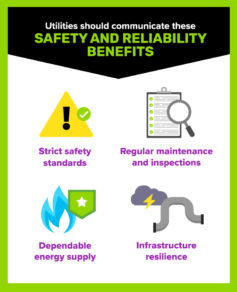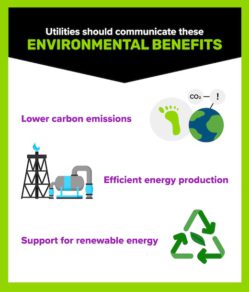Utility marketing requires more than just traditional billing inserts or generic emails to communicate with customers.
Whether you’re looking to reach residential customers, business customers or low-income households, each group has unique needs, preferences and expectations. To successfully engage with a diverse audience, utility marketers must develop a comprehensive utility marketing strategy that delivers relevant, timely and personalized communications.
Learn more about how you can create an effective utility marketing strategy that speaks to different customers, fosters trust and achieves utility goals.
Get Personal with Customers in Your Utility Marketing Strategy
Personalization is essential for marketing utilities and creating meaningful customer connections. In fact, over 70% of consumers expect personalization and are dissatisfied when a company doesn’t tailor its messaging. By understanding a customer’s needs and preferences, utility marketers can send impactful communications that are relevant, timely and useful.
Using data and customer preferences in your utility marketing strategy helps to create tailored messaging that meets the specific needs of each customer. Personalization builds trust and encourages customers to take action, whether enrolling in financial assistance, signing up for My Account or participating in demand response programs.
How to personalize utility messages:
- Start by gathering insights into your customer base through surveys, analytics and feedback.
- Segment your customers based on factors such as demographics, energy usage, financial situation or preferred communication channels.
- Experiment with personalization in various communication channels, like email campaigns, newsletters and bill inserts.
FirstEnergy used Questline Digital’s personalized video solution, SmartVX, to increase customer awareness and enrollment in state and federal financial assistance programs. The videos used customer data to deliver highly targeted, customized messages to each customer.
Each SmartVX video was customized with an introductory mention of a customer’s FirstEnergy operating company, the account holder’s name and information about one or more financial assistance programs. The SmartVX videos were highly successful, with a 70.5% watch rate and 4,802 call-to-action (CTA) clicks, showcasing the power of personalization.
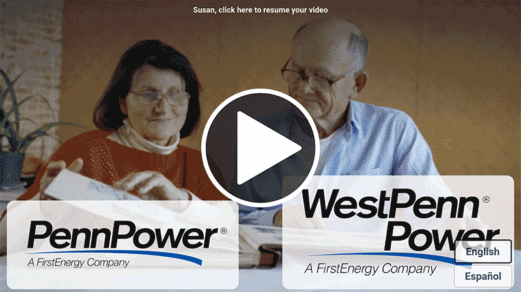
Be a Trusted Energy or Water Expert
Customers look to their utilities for more than just power — they want insights, advice and solutions. Marketing utilities is about being a trusted resource, not simply an electric, natural gas or water provider.
As energy and water consumption becomes more complex with the rise of renewable energy, electric vehicles and smart technologies, utilities have the opportunity to position themselves as trusted experts. That’s why customer education is an important objective of any utility marketing strategy.
One of the most important roles a utility can play is helping customers reduce their energy or water usage. While many customers are interested in cutting down their bills, they often don’t know where to start. Educating customers empowers them to make informed decisions and builds stronger relationships.
Provide accessible educational resources in your utility marketing strategy, including:
- Online calculators: Let customers estimate their energy or water usage and potential savings from efficiency upgrades.
- Energy-savings tips: Share advice on reducing consumption during peak seasons, like using smart thermostats or low-flow showerheads.
- Energy and water audits: Offer professional assessments for both residential and business customers, helping them identify areas where they can improve efficiency and save money.
For Nashville Electric Service (NES), educational content is an important element of its utility marketing strategy. The communications team educates customers about ways to save ahead of the winter and summer seasons. Many customers are unaware of the connection between high energy bills and outside temperatures. The utility’s well-received weather alert campaign provided vital energy savings and safety tips before a summer heatwave.

Additionally, NES engages customers around the holidays with festive and informative educational content. In November and December, the utility reminds customers of the impact of hosting holiday parties on their utility bills. Through engaging infographics and social media posts, the utility provides essential tips to help customers improve energy efficiency during the holiday season.
When communicating with customers, another key topic is renewable energy. While there is a growing interest in renewables, the transition can feel overwhelming to many customers. Your utility marketing strategy should provide a wide variety of resources to help customers better understand their options, whether installing solar water heaters, participating in community solar programs or signing up for renewable energy plans.
By demystifying renewable energy, your utility can make it easier for customers to transition to greener options and, in turn, solidify its role as a trusted resource.
Become the go-to expert on renewables:
- Explain how renewable energy works: Create easy-to-understand guides or videos that break down how solar, wind, water and other renewables can benefit customers.
- Highlight available programs: Promote renewable programs, including community solar subscriptions, hydropower programs, renewable energy credits or residential solar incentives.
- Provide installation resources: Offer advice on working with approved solar installers and navigating tax credits or rebates for home solar installations.
Help Customers Find the Right Support
With rising energy costs and economic uncertainty, many utility customers struggle to manage their monthly bills. Financial assistance programs — including payment plans, bill forgiveness and state and federal aid — provide essential support for customers facing financial hardship.
However, the success of these programs depends on how well utilities communicate about program availability and benefits. When marketing utilities, effective campaigns about financial assistance programs are vital to helping customers in need.
Follow these best practices for communicating about assistance programs:
- Design compassionate campaigns that clearly communicate the availability and benefits of assistance programs.
- Use simple language and visuals to guide low-income customers through the application process.
- Incorporate testimonials from other customers who have benefited from these programs to create a sense of trust and reassurance.
Keep in mind not every customer is eligible for financial assistance. You should segment your audience and target communications to those most likely to benefit. Use customer data to identify customers who have fallen behind on their bills, are using energy at higher levels or live in areas with lower average income levels. This targeted approach ensures that your utility marketing strategy reaches those in need.
- Behavior-based targeting: Focus on customers who have shown signs of financial difficulties, such as late payments, high energy or water usage or participation in past assistance programs.
- Demographic targeting: Utilize data on income levels, geographic locations or household size to tailor communications to customers in low-income communities or areas hit hard by economic downturns.
- Personalized messaging: Address customers by name and reference specific account information to make communications more personal and relevant. For example, “Based on your recent usage, you may qualify for assistance to reduce your monthly bill.”
To spread awareness about available financial assistance programs, National Grid partnered with Questline Digital to produce a series of four educational webinars. To reach a diverse audience, the webinars were produced with closed captioning and broadcast separately in Spanish and Portuguese. They also included a video of an American Sign Language (ASL) interpreter.
The webinar format was ideal for education due to its interactivity and ability to reach a large number of customers at once. Customers also had the opportunity to ask questions during the event. The webinar series was a successful part of National Grid’s utility marketing strategy, with nearly 9,800 customers registered for the four webinars.
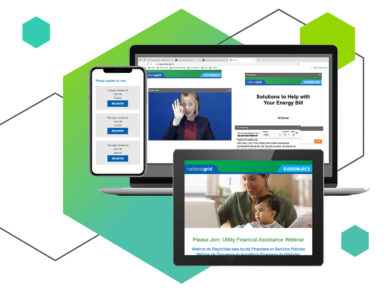
Share Solutions with Business Customers
For many businesses, energy and water costs represent a significant portion of operating expenses, making operations management a top priority. Business customers look to their utility for tailored solutions, expert advice and proactive customer engagement.
Utilities can play a critical role in supporting business customers and being a trusted resource. From energy efficiency initiatives to demand response programs, utilities need to address the unique needs of small businesses, large corporations and industrial facilities. Your utility marketing strategy should help businesses optimize usage, reduce costs and achieve sustainability goals.
Offer tailored solutions and communication channels for business customers:
- Promote energy and water audits and other programs to help businesses identify ways to reduce consumption.
- Spread awareness about demand response programs and incentives for energy-saving investments.
- Host webinars and industry-specific events to engage businesses and showcase best practices in efficiency.
Many businesses are working to achieve ambitious sustainability goals, such as reducing their carbon footprint and transitioning to renewable energy. Utilities can support these efforts by providing expert advice on efficiency improvements, green building best practices, regulatory requirements and more.
How to help businesses with their sustainability goals:
- Usage reports: Provide businesses with detailed reports that track energy and water consumption patterns, peak usage times and potential inefficiencies.
- Benchmarking: Offer benchmarking services that allow businesses to compare their energy or water performance with similar organizations, identifying opportunities for improvement.
- Custom dashboards: Develop online portals where business customers can monitor real-time energy and water usage and receive personalized recommendations for reducing consumption.
To connect with Key Account customers, the Los Angeles Department of Water and Power (LADWP) created a monthly email newsletter featuring important utility news, educational content and relevant programs. The Key Accounts newsletter is a vital part of the utility marketing strategy, helping to increase engagement and build stronger relationships.
Each newsletter features a blend of original articles from LADWP and content from Questline Digital’s Content Catalog, including a monthly video. Personalized calls-to-action include account manager contact details, making it simple for customers to get in touch for more information. The newsletter also highlights LADWP’S Sustainability Awards Program, which recognizes business customers who have achieved positive environmental impacts through the utility’s rebate programs.
The Key Accounts newsletter serves as a valuable tool in LADWP’s utility marketing strategy to effectively reach more than 1,200 large commercial customers.
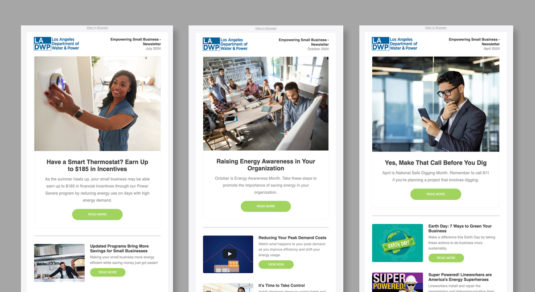
Emphasize Sustainability and Green Initiatives
As environmental concerns continue to grow, sustainability has become a key priority for many industries, including utilities. Customers increasingly expect the companies they support to take meaningful steps toward reducing their environmental impact.
For utilities, promoting sustainability initiatives and goals is not only important for fostering customer engagement but also for encouraging energy and water conservation and responsible resource use. However, communicating these efforts effectively requires a well-planned utility marketing strategy. Positioning your utility as a leader in sustainability resonates with eco-conscious customers and reinforces your commitment to innovation.
Promote green energy options and sustainability efforts in your utility marketing strategy:
- Showcase renewable energy plans, hydropower programs and incentives for home upgrades like heat pumps or solar water heaters.
- Promote commercial solar, EV fleet programs or energy-efficient lighting and HVAC system upgrades to business customers.
- Share case studies, videos or infographics that show how customers can contribute to sustainability goals via renewable programs and smart energy choices.
As part of its utility marketing strategy, Louisville Gas & Electric (LG&E) features sustainability initiatives on a dedicated landing page on the utility’s website. Customers can learn more about each project, including how the utility harnesses solar and hydroelectric power to generate clean energy and their partnerships in cutting-edge carbon capture technology. Consumers can even watch “solar sheep” that sustainably maintain vegetation at the utility’s E.W. Brown solar facility via a live webcam. Customers get a clear picture of LG&E’s sustainability efforts in a fun and engaging way.

Customer-Centric Utility Marketing Strategies
Creating a comprehensive utility marketing strategy is essential for engaging with a diverse customer base. Utilities can build stronger relationships and trust with their audience. A thoughtful, customer-centric approach — one that addresses unique needs and preferences — improves customer satisfaction and positions utilities as trusted partners. With a well-rounded strategy in place, you can successfully guide your utility’s customers toward a more informed and empowered future.
